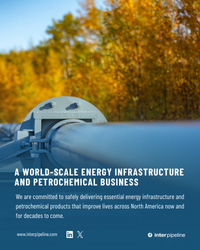The Henry Hub in Louisiana is the best known natural gas trading location in the world. There is certainly no more liquid point in the industry. An average of 350,000 Henry Hub natural gas futures contracts trade on the CME/NYMEX each day. The Henry price is used to compute locational ‘basis’ at all other natural gas trading points in North America and thus is the reference price for tens-of-thousands of derivative instruments and other commercial contracts. But the U.S. natural gas industry is changing rapidly. Henry started out as a supply market hub but a natural gas demand renaissance in and around Louisiana is transforming it into a demand market hub. How will this impact Henry and can/will it endure as the national benchmark price? Today, we begin an in-depth series looking at Henry Hub, starting with its origins.
In the Beginning
Trading of natural gas as a commodity is not something that goes back to the early days of the petroleum industry. Just over twenty-five years ago, most natural gas was sold by producers under long-term, life of lease contracts to pipelines at regulated prices. In 1985 that started to change with Federal Energy Regulatory Commission (FERC) Order 436 which created ‘open access’ on pipelines – in effect, allowing others besides the pipelines to ship gas. That in turn stoked the beginnings of a burgeoning spot market. Trade publications started to track prices at a variety of locations around the country, and for the first time there was some transparency in the market for natural gas prices. But it was still a very primitive market tangled up with legacy contracts and vestiges of price controls. Nevertheless, by the late 1980s natural gas started to be traded actively – mostly on a monthly basis during that magical period at the end of each month called bid week. The Natural Gas Decontrol Act finally wiped away the last vestiges of price controls in 1989.
By this time, futures contracts for crude oil and heating oil had already been trading for years on the New York Mercantile Exchange (NYMEX, now Chicago Mercantile Exchange). But when it came time to establish a natural gas futures contract, there was a problem: A physical commodity futures contract needs a delivery point, preferably an industry-accepted benchmark, and at the time, there was no single location that was generally accepted as the reference price for trading gas. Gas was being actively traded in 40-50 locations around the country, most of them tracked by trade publications, but no one point stuck out as the benchmark. So it fell to the NYMEX to identify the best delivery location to use, something that met some generally accepted guidelines: diversity of supply, reliability, and spot price liquidity. In the gas world, that meant the location needed to have connections with a lot of pipelines. It needed great reliability with a highly reputable operator. The market needed to use it for spot trading. And most importantly, it needed to have operational characteristics that would reduce the probability of any kind of curtailments or supply squeezes down to near-zero. Even though most futures contracts don’t go to delivery, nothing is worse for a futures contract than a delivery glitch.
By late-1988 a NYMEX product development team had zeroed in on Texas as the best region for a futures contract because of the large intrastate market, and came up with a potential delivery point – the network of pipelines around Katy, TX (near Exxon’s Katy natural gas processing plant), just west of Houston. The area had all the right stuff, and seemed to be a shoe-in for the delivery point. But it was not to be. That’s because a team from Texaco’s Sabine Pipeline swooped in to take the prize.
Join Backstage Pass to Read Full Article









